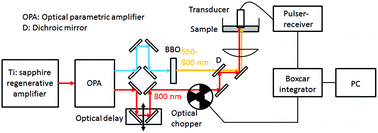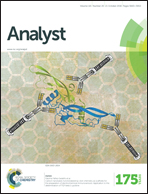Stimulated Raman photoacoustic spectroscopy for chemical-contrast imaging of a sample deeply buried in scattering media
Abstract
The development of a stimulated Raman scattering photoacoustic (SRS-PA) spectrometer is presented. In the apparatus, a molecular vibrational mode is excited by the SRS process. The vibrational excitation energy is converted to heat by vibrational relaxation. The volumes around the excited molecules including the surrounding solvent molecules expand by heating, resulting in the generation of an ultrasonic wave. The ultrasonic wave can be used as a molecular-selective signal. Because the ultrasonic wave is scarcely scattered by media, SRS-PA is expected to be applied for obtaining molecular-selective signals from deeply buried samples. In the present study, a SRS-PA spectrometer was developed and applied to obtain molecular-selective signals from test samples. The SRS-PA signals from water and lipid, which are important components in biological systems, were first obtained. The SRS-PA signal from a polystyrene film buried in a highly light-scattering intralipid suspension was also measured. We succeeded in obtaining the signal from the film when it was buried with a depth of up to 1.8 mm. The results indicate that SRS-PA can be effectively applied for the chemical-contrast imaging of deeply buried samples.


 Please wait while we load your content...
Please wait while we load your content...